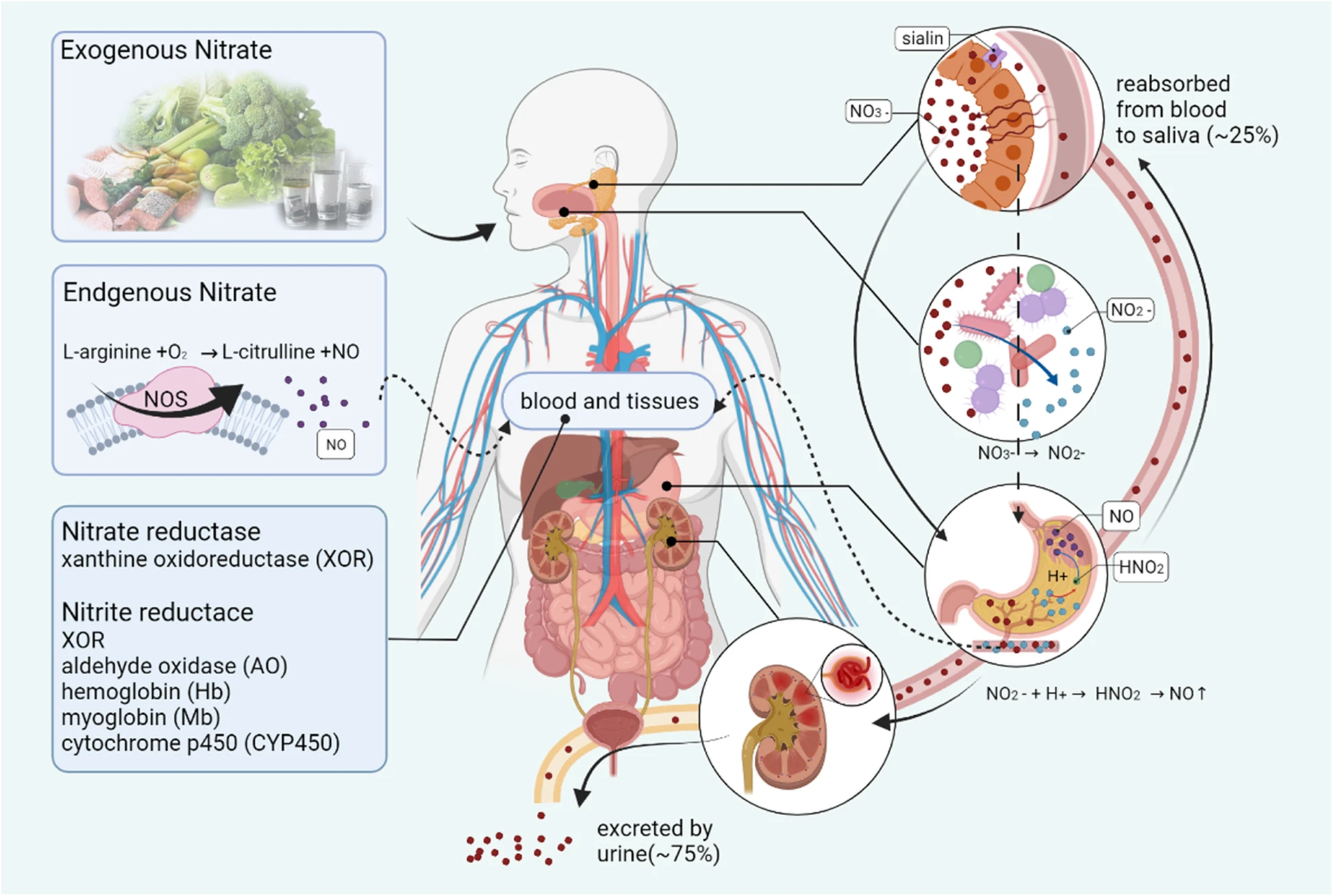
Sources of Nitrites in Organisms
Nitrites in organisms can originate from both endogenous (internal) and exogenous (external) sources. Understanding these sources is crucial for comprehending the role of nitrites in human physiology and their potential health impacts.
Endogenous Sources
- Nitric Oxide Metabolism:
- Nitrites are primarily formed in the body as a byproduct of nitric oxide (NO) metabolism. Nitric oxide is a crucial signaling molecule involved in various physiological processes, including vasodilation, neurotransmission, and immune responses. Once produced, NO can be rapidly oxidized to nitrite (NO2-) in the blood and tissues.
- The L-arginine-nitric oxide synthase (NOS) pathway is a significant endogenous source of nitrite. In this pathway, NO is synthesized from L-arginine by the enzyme nitric oxide synthase and is subsequently oxidized to nitrite.
- Enzymatic Reduction:
- Certain enzymes, such as xanthine oxidase and deoxyhemoglobin, can reduce nitrate (a related compound) to nitrite. This enzymatic reduction is particularly relevant under hypoxic or low oxygen conditions, where the availability of oxygen to complete the oxidation of NO to nitrate is limited, leading to an accumulation of nitrites.
Exogenous Sources
- Dietary Intake:
- Nitrites are commonly ingested through the diet, either from nitrite additives used in food preservation (especially in cured meats) or naturally occurring nitrites in vegetables and other foods. Leafy green vegetables like spinach and lettuce, as well as beets, are rich in nitrates, which can be converted to nitrites by bacteria in the mouth and the gut.
- The conversion of dietary nitrates to nitrites is facilitated by commensal bacteria in the oral cavity. These bacteria reduce nitrates (NO3-) to nitrites as part of their metabolic processes.
- Environmental Exposure:
- Exposure to nitrites can also occur through environmental sources, such as contaminated water. Nitrate contamination in groundwater, which can be reduced to nitrite, is a concern in agricultural areas where nitrogen-based fertilizers are extensively used.
Physiological Relevance of Nitrites
- NO Homeostasis: Nitrites play a critical role in maintaining NO homeostasis in the body. They act as a reservoir for NO, especially under conditions where the direct production of NO via the NOS pathway is impaired, such as during hypoxia.
- Vasodilation and Blood Flow Regulation: Nitrites can be reduced back to NO, which is a potent vasodilator. This reduction is facilitated by various enzymes and occurs predominantly in conditions of low oxygen, helping to regulate blood flow and oxygen delivery to tissues.
- Protective Roles: Dietary nitrites have been shown to have protective effects against diseases such as hypertension, heart attacks, and vascular dysfunction. They contribute to the modulation of blood pressure and the prevention of cardiovascular diseases.
In summary, nitrites in organisms originate from both internal metabolic processes and external sources, primarily dietary intake. They are crucial for various physiological functions, particularly in maintaining NO levels and supporting vascular health.
Citations:
[1] https://ppl-ai-file-upload.s3.amazonaws.com/web/direct-files/14222036/38014a98-a0b8-4558-a7b9-9a3c9f210144/NITRITE.pdf


